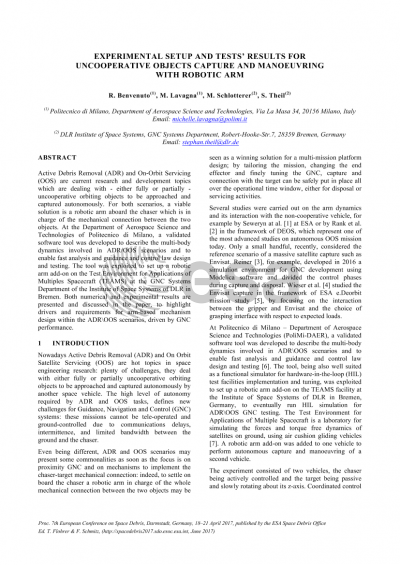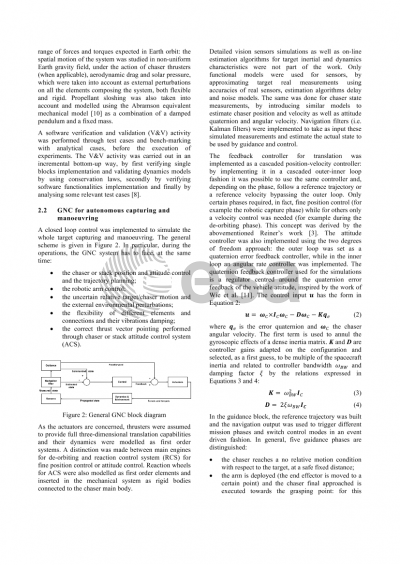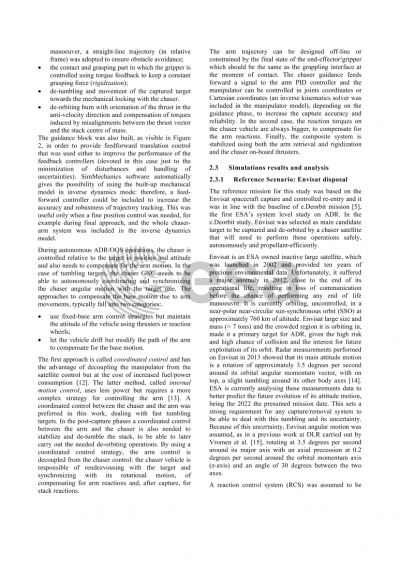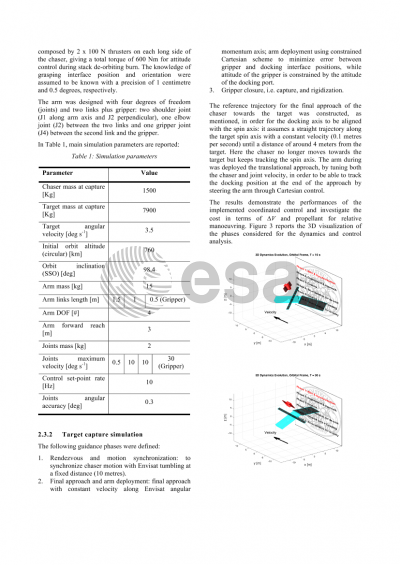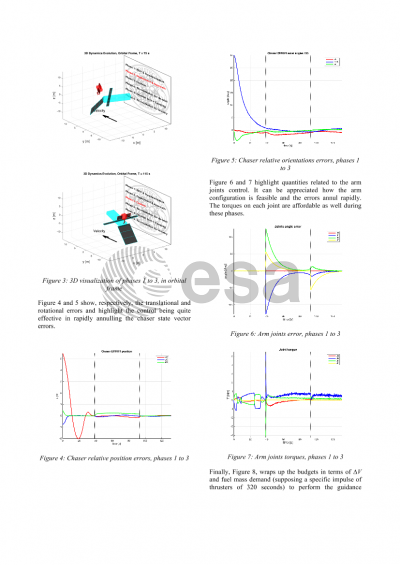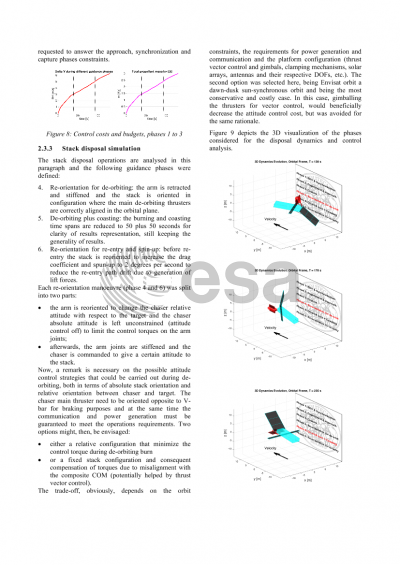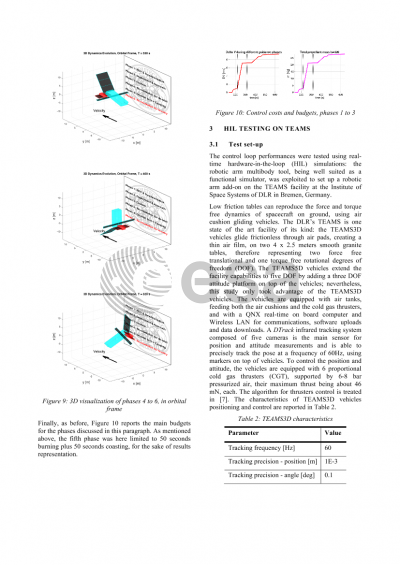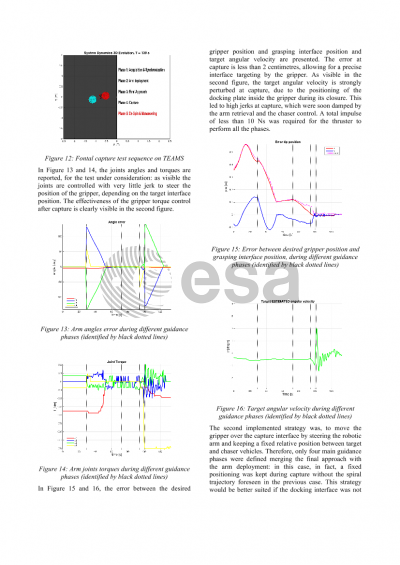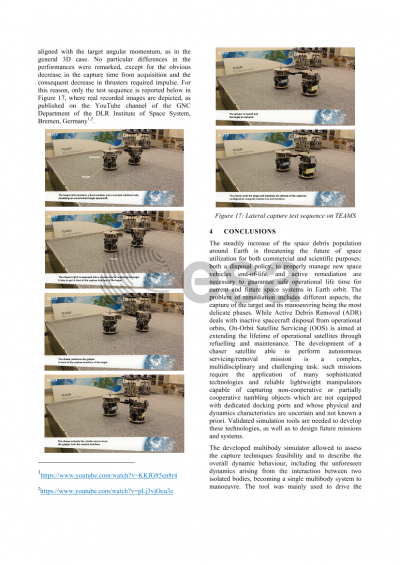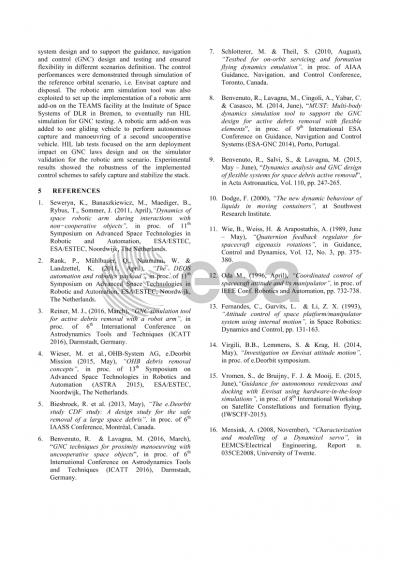Document details
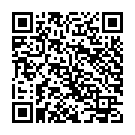
Abstract
Nowadays Active Debris Removal (ADR) and On Orbit Satellite Servicing (OOS) are hot spots in space engineering research: plenty of challenges, they deal with either fully or partially uncooperative orbiting objects to be approached and captured autonomously by another space vehicle. Even being different, ADR and OOS scenarios may present some commonalities as soon as the focus is on proximity Guidance Navigation and Control (GNC) and on mechanisms to implement the chaser-target mechanical connection: indeed, to settle on board the chaser a robotic arm in charge of the whole mechanical connection between the two objects may be seen as a winning solution for a multi-mission platform design; by tailoring the mission, changing the end effector and finely tuning the GNC, capture and connection with the target can be safely put in place all over the operational time window, either for disposal or servicing activities.
At Politecnico di Milano – Department of Aerospace Science and Technologies (PoliMi-DAER), a validated software tool was developed to describe the multi-body dynamics involved in ADR\OOS scenarios and to enable fast analysis and guidance and control law design and testing. The tool, being also well suited as a functional simulator for hardware-in-the-loop (HIL) test facilities implementation and tuning, has been recently exploited to set up a robotic arm add-on on the TEAMS facility at the Institute of Space Systems of DLR in Bremen, Germany, to eventually run HIL simulation for ADR\OOS GNC testing. The Test Environment for Applications of Multiple Spacecraft is a laboratory for simulating the forces and torque free dynamics of satellites on ground, using air cushion gliding vehicles. A robotic arm add-on was added to one vehicle to perform autonomous capture and manoeuvring of a second vehicle.
The experiment consisted of two vehicles, the chaser being actively controlled and the target being passive and slowly rotating about its z-axis. Coordinated control strategies were used to capture the target. The control task for the chaser vehicle was to rendezvous with the target and synchronizing with its rotational motion. The gripper was controlled to grasp the capture interface with a constant pre-selected torque, which was also used as feedback for successful capture and to trigger the next guidance phase. Finally, the composite system was stabilized using both retrieval and rigidization of the arm as well as the chaser’s on-board thrusters.
The paper details the work done to implement the breadboard on the DLR TEAMS facility, to run ADR\OOS simulations based on the robotic arm mechanism, to develop the arm control software and arm GNC, by exploiting the PoliMi-DAER software tool. Both numerical and experimental results are presented and discussed in detail, to highlight drivers and requirements for arm-based mechanism design within the ADR\OOS scenarios, driven by GNC performance.
Preview
